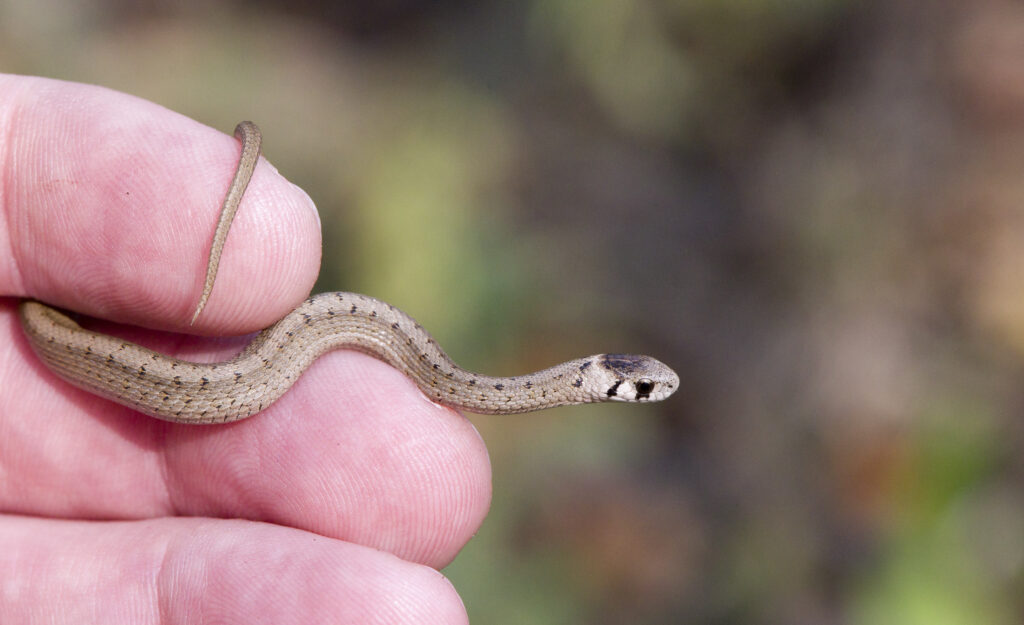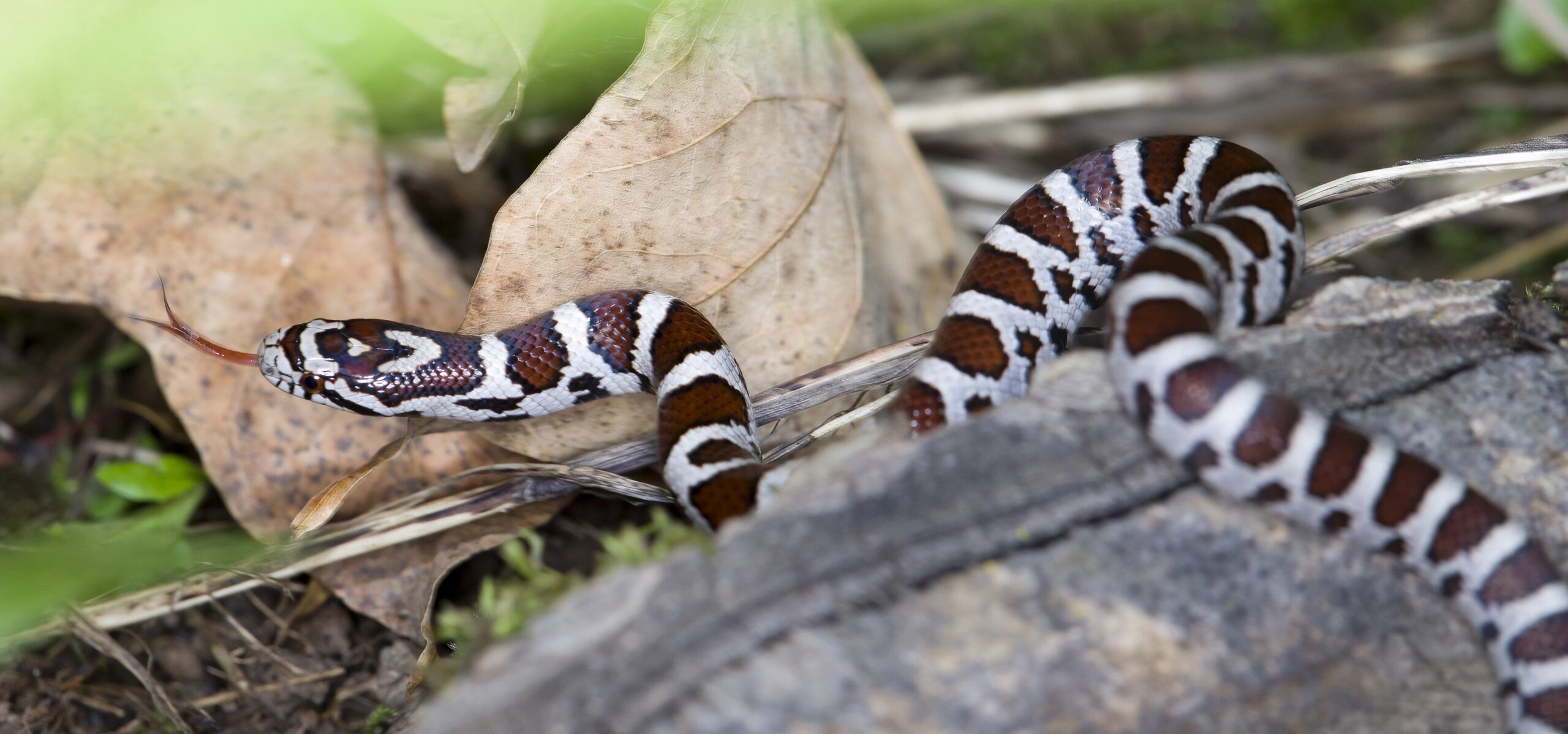As summer wanes, many snakes become more active in advance of winter. That makes it an excellent time to observe any of the nine species which are commonly found in Niagara. While snakes may not be beloved by all, they are a critical part of the ecosystem and important predators of many pests.
COVER PHOTO: The eastern milksnake is an important predator of rodents. Like pythons, the milksnake dispatches its prey through constriction.
According to the iNaturalist citizen-science platform, the most frequently observed snake in Niagara is the common gartersnake (Thamnophis sirtalis). This familiar snake can be found in almost any habitat, from forest to meadow and swamp. They mainly feed on earthworms but will also take small fish and amphibians. Larger adults may prey on rodents. Most gartersnakes are dark brown or green with broken yellow stripes; however, they are highly variable, and may have colourful striping or checkered patterns in red or orange.
The eastern milksnake (Lampropeltis triangulum) is the second-most frequently observed snake in Niagara. They usually have a light grey body with alternating blotches of brown or red, but they are also highly variable. Their blotches may form rings, which sometimes causes them to be mistaken for the venomous coral snake. The name milksnake comes from the myth that these snakes enter barns to drink milk from cows. However, adult milksnakes prefer to eat rodents, which is why they are often sighted in farm buildings while they are searching for prey.
In third place on iNaturalist, the common watersnake (Nerodia sipedon) is rarely found far from aquatic environments. This snake is an expert hunter of fish, frogs, and other amphibians. They are usually dark grey with mottling and may appear to be completely black.
In an interesting twist, the invasive round goby has been a boon to watersnake populations in Niagara. The Lake Erie subspecies was once threatened with extinction, but the snakes adapted to prey on the abundant gobies, and their numbers have recovered enough that they have been removed from the species at risk list for a decade.

In fourth place, Dekay’s brownsnake (Storeria dekayi) is another specialist hunter. They prey almost exclusively on snails and slugs; they have evolved specialized jaws which are able to extract snails from their shells. These light brown snakes have a white line down their back, bordered with a double set of black dots and a lighter belly. They are found throughout Niagara, near water or in other moist environments favoured by snails.
Like the gartersnake and watersnake, Dekay’s brownsnakes give birth to live young instead of laying eggs. Newborn snakes are a joy to find in late summer and are active well into October.
The red-bellied snake (Storeria occipitomaculata) is one of the smallest in Niagara and may be easily mistaken for an earthworm or a small Dekay’s brownsnake. No other snake in Niagara has the solid red belly that gives this snake its common name. They usually have a lighter patch just behind their head, but not as distinct as that of the ring-necked snake. They feed on insects, worms, and other invertebrates and are important predators of garden pests.
A handful of other snakes are also found in Niagara, and are rarely observed on iNaturalist.
The smooth green snake (Ophedodrys vernalis) can be found in the bogs in Wainfleet. A specialist hunter of insects, this beautiful snake is one of the most striking but difficult to spot snakes in Niagara.
The ribbon snake (Thamnophis saurita) is recorded several times in West Lincoln. The ribbon snake resembles the common gartersnake, but usually has unbroken stripes and a white spot in front of the eyes. These differences are subtle and submitting images of snakes to iNaturalist is a great way to get identification help from the scientific community.
The massasauga (Sisturus catenatus) is the only rattlesnake found in Ontario. There are scattered populations along the shores of Georgian Bay and the Bruce Peninsula; in Niagara, the massasauga has primarily been observed in the Wainfleet Bog. A shy snake, it usually relies on camouflage to ambush prey and avoid predators.
The ring-necked snake (Diadophis punctuates) is the rarest Niagara snake according to iNaturalist. It is greyish with a yellow or orange ring at its neck, as suggested by the common name. This small snake coils its tail when threatened.
If you’d like to join the iNaturalist citizen science project, create an account at iNaturalist.ca. The platform is free to use and has an application for both iOS and Android phones. It’s simple to use; upload photos with your phone’s camera, or your computer, and submit them for identification. Your observations can then become part of research projects across Canada. You may also help by submitting identifications, which are driven by community consensus. Submitting observations has become one of my favourite hobbies, and any nature enthusiast should enjoy it.
